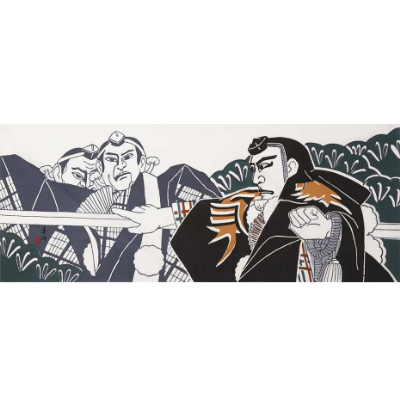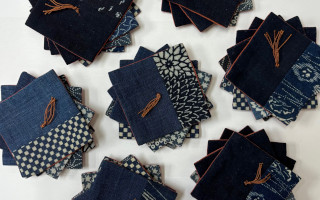
【KABUKI Miscellany】 Episode 12 : The Colours of Kabuki – Black / Narrated by Tateo Okido
Hello! We are Asanoha, a tenugui specialty shop located in AzabuJuban, Tokyo.
We’re delighted to share a collection of intriguing stories related to Kabuki. These tales are narrated by Mr. Tateo Okido, an expert in Kabuki and the artist behind the original designs of our Kabuki-themed tenugui. Please enjoy this special series, Kabuki Miscellany, presented by Mr. Okido.
Kabuki Miscellany – Episode 12 : The Colours of Kabuki – Black
In kabuki, there is a distinctive palette of colours: vibrant hues that dazzle the eyes, muted tones that reflect everyday life, luxurious and resplendent gold brocades, colours steeped in tragedy and swirling with grudges, lighthearted and comical shades — a wide spectrum indeed. Among them, perhaps the most intriguing is black.
First, there are the stage‑hands known as kurogo. On stage they carry props or assist actors, but their presence is meant to go unnoticed by the audience. Then there is the hidden musicians’ space behind the black bamboo curtain (kuro‑misu) — the ensemble that provides ambient sound, music, and effects. It is not ostentatious accompaniment, but a subtle underpinning of sound: wind, snow, rain, waves, birdsong — all created to enhance the drama.
Then there is the jōshiki‑maku, the standard curtain whose first panel is black. In theatres, the sequence may go black–green–brown, memorably “ku‑mi‑cha” (from the Japanese words kuro [black], midori [green], and cha [brown]), though some use different orders. In the Edo‑period Nakamura-za it was reportedly black–white–brown. What does this black signify? Before the play begins, as the lights dim and murmurs fade, the hall darkens — that moment of silence and expectation. It’s a thrilling psychological shift, a portal into another world: kabuki begins. In black’s darkness, stage transitions, silent moments, the interval before the next scene — all rely on that shade.
The colours of kabuki don’t just shape effects and sets — they also bear emotional and psychological weight. In old theatres with dim lighting, bold or dramatic colours served to convey emotion or character. Even now, though lighting is brighter, traditional choices remain, preserved by generations of performers and craftsmen.
For example, in the dance‑drama Tsumoru Koi Seki no To, the first half unfolds in soft, misty cherry‑blossom pink — an aesthetic echoing Japanese painting. When the villain Ōtomo no Kuro‑nushi reveals his true form, darkness descends. The pale blossoms intensify, and the black costume of villainous betrayal gleams — the darkness strikes, evil is revealed. Only when the actor’s skill and a powerful villain’s charisma coincide does that black become a true colour of kabuki.
In Ninokuchi‑mura, the tragic roles of Umegawa and Chūbei wear black costumes glistening under the snow. In their farewell scene with Chūbei and his father, their mourning black deepens the sorrow. The black becomes a canvas for grief, a symbolic “darkness bound for death,” yet still imbued with tragic beauty.
The play Onoe Sadakurō, said to have been invented by Nakamura Nakazō, also demonstrates how only a particular actor can make a black costume shine. Though many may attempt the role, few carry the weight of those black robes appropriately — the theatrical magic of kabuki often depends on matching role and actor precisely.
There are not many roles for which black fits so perfectly. Nevertheless, across kabuki as a whole, black remains an essential colour. Black can mean emptiness, societal darkness, human cruelty, or the internal darkness of the human soul. In the interplay of era, story, mood, and stagecraft, it is this darkness — black — that often makes the colours of kabuki truly vivid.
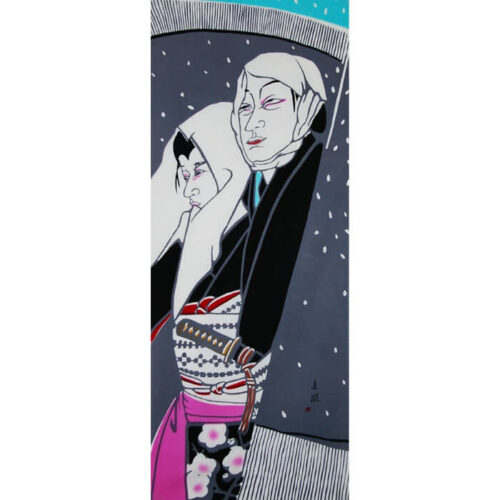
Tenugui Design “Ninokuchi-mura” – Original Artwork by Tateo Okido



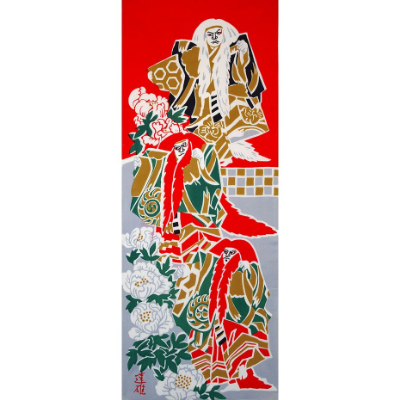
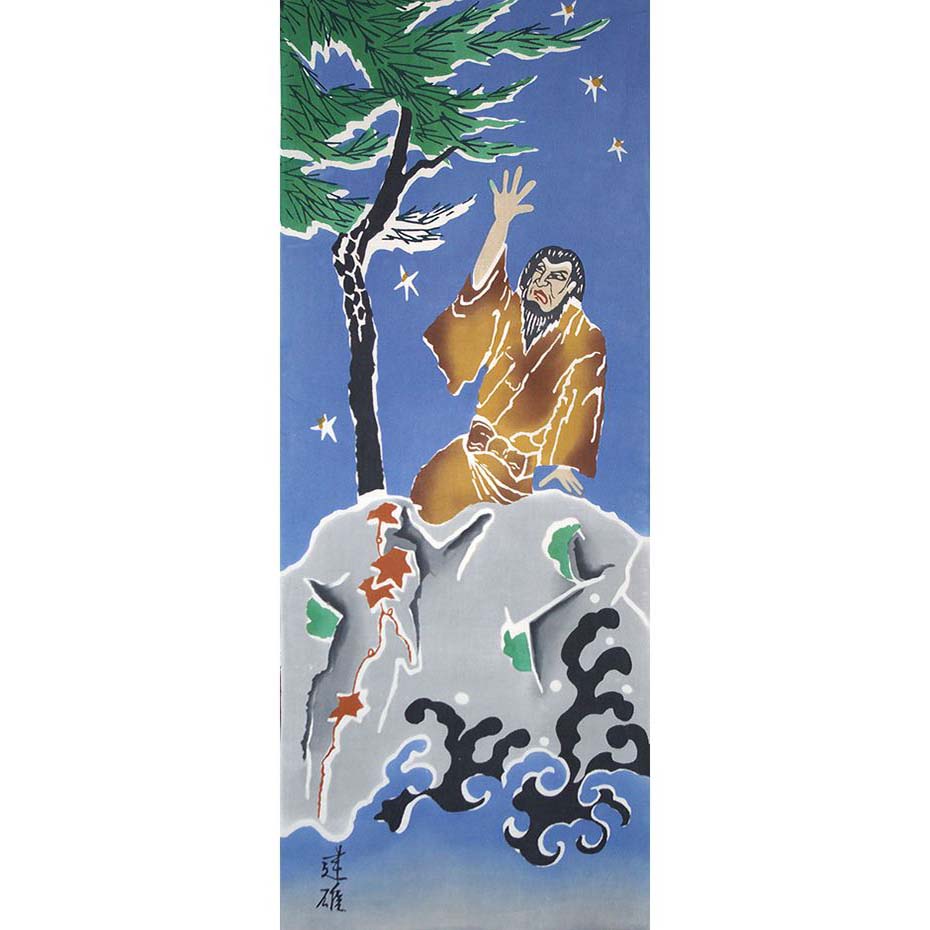
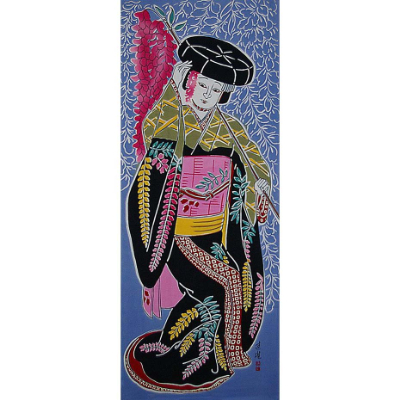




」.jpg)



